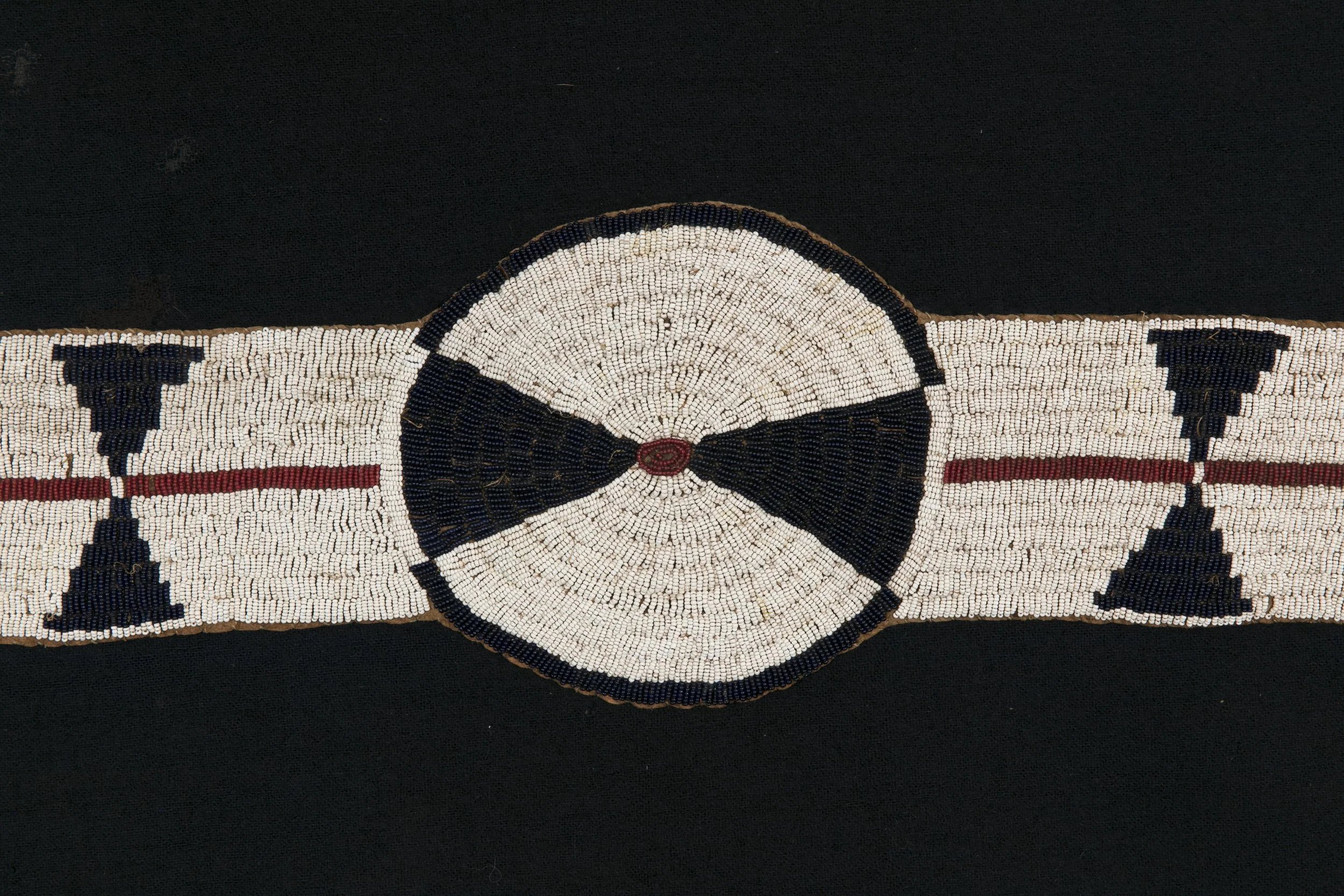Arapaho Blanket Strip, 1865 / Ex Paul Gray, NY / Published
These particular types of blanket strips feature prominently in portraits taken of the Cheyenne and Arapaho in the ‘60s and ‘70s. In fact, a very similar blanket to this one was pictured in a Soule photo on an Arapaho encampment, taken between 1868 and 1874.
Blanket strips evolved, it is believe, out of a need to cover the unsightly seams on buffalo robes. They subsequently evolved during the 19th century to become a decorative element and status symbol all their own.
Older Cheyenne and Arapaho “strips” made from native tanned buffalo are today among the most sought after, often celebrated for their elegance and simplicity. This simple design is demonstrative of the transition beadworkers from pony beads to seed beads in the mi-19th century. The design format of this blanket strip is unusual, as the more common layout involves rosettes with opposing quadrants of navy or black against white.
49” long and 69” wide (blanket); 62” long and 7” wide (blanket strip).
Ex Paul Gray, NY; ex Dr. Robert Pamplin Jr, OR
Published: Mary Schlick and Bonnie Kahn, Keeping the Spirit Alive: American Indian Art from the Dr. and Mrs. Robert B. Pamplin Jr. Collection (Portland, OR: Oregon Historical Society Press, 2001), p. 13.
#51016


